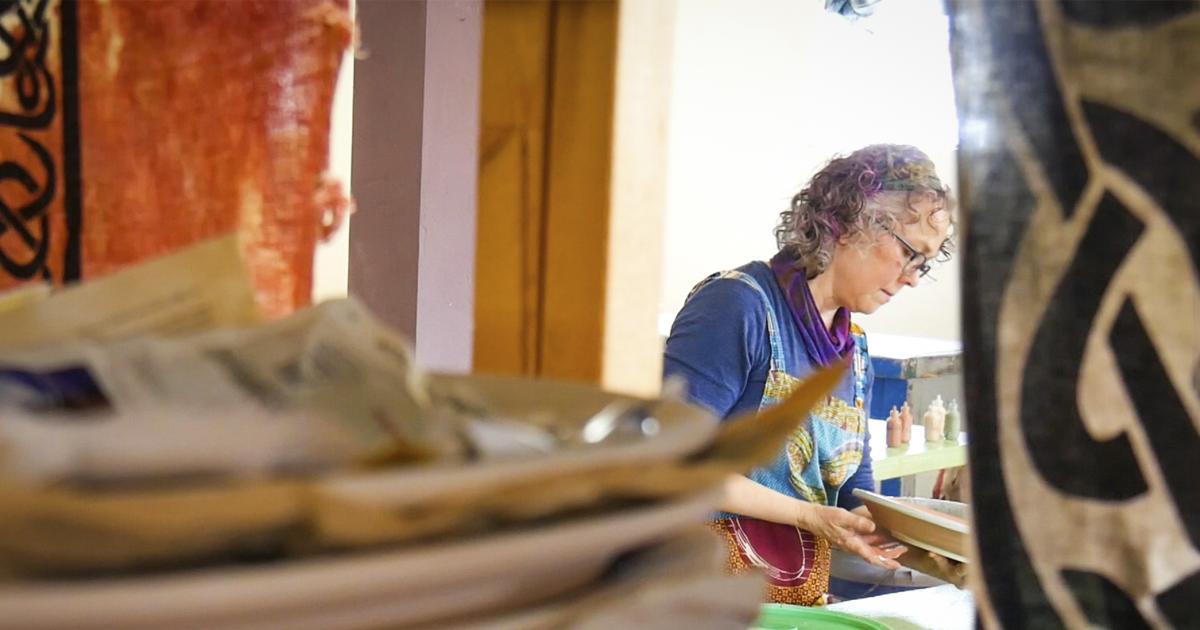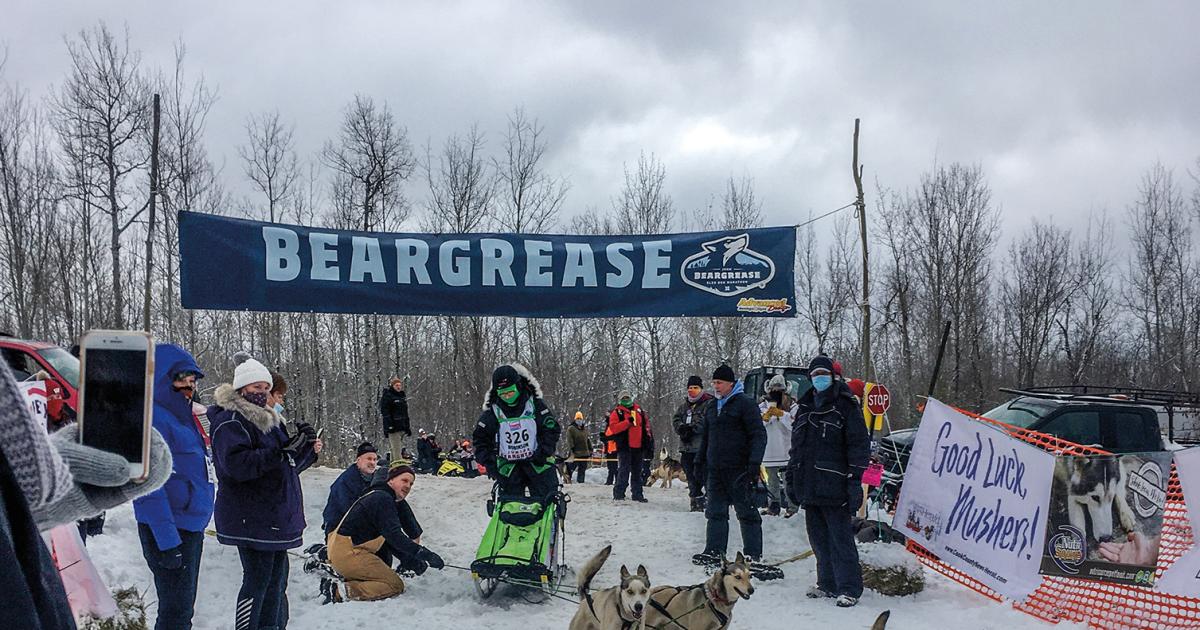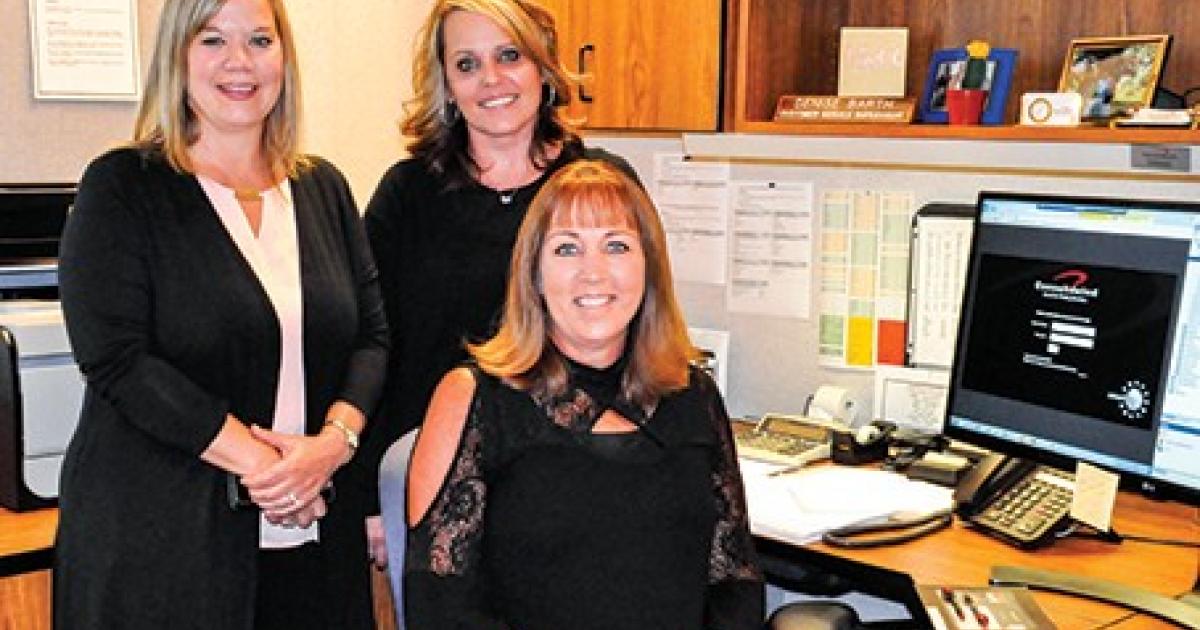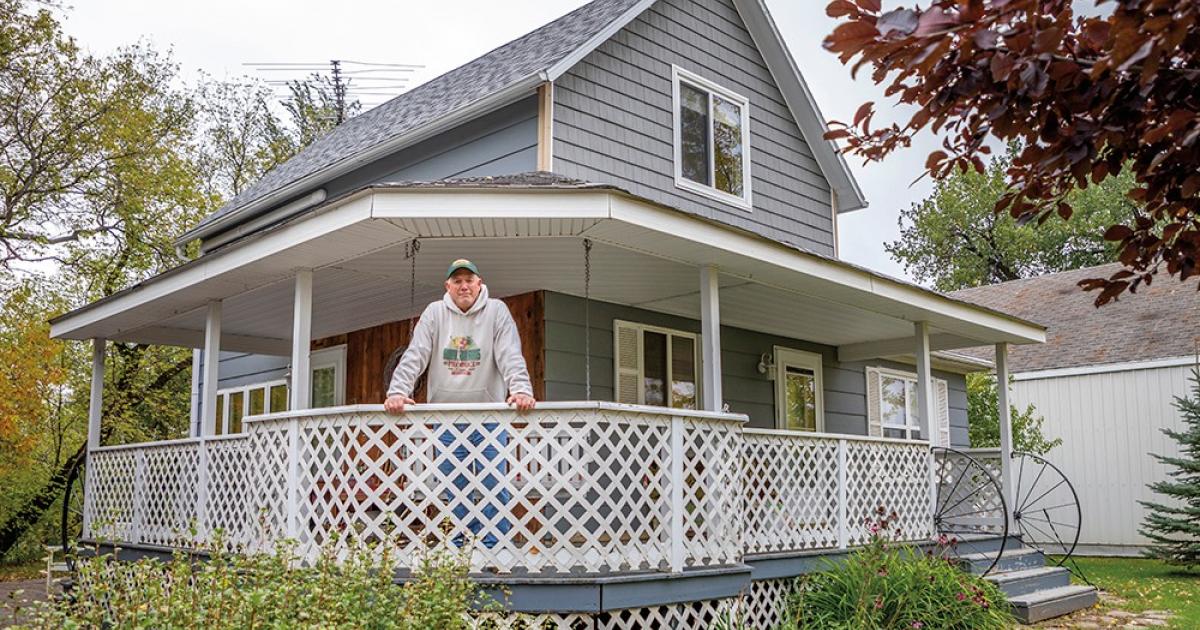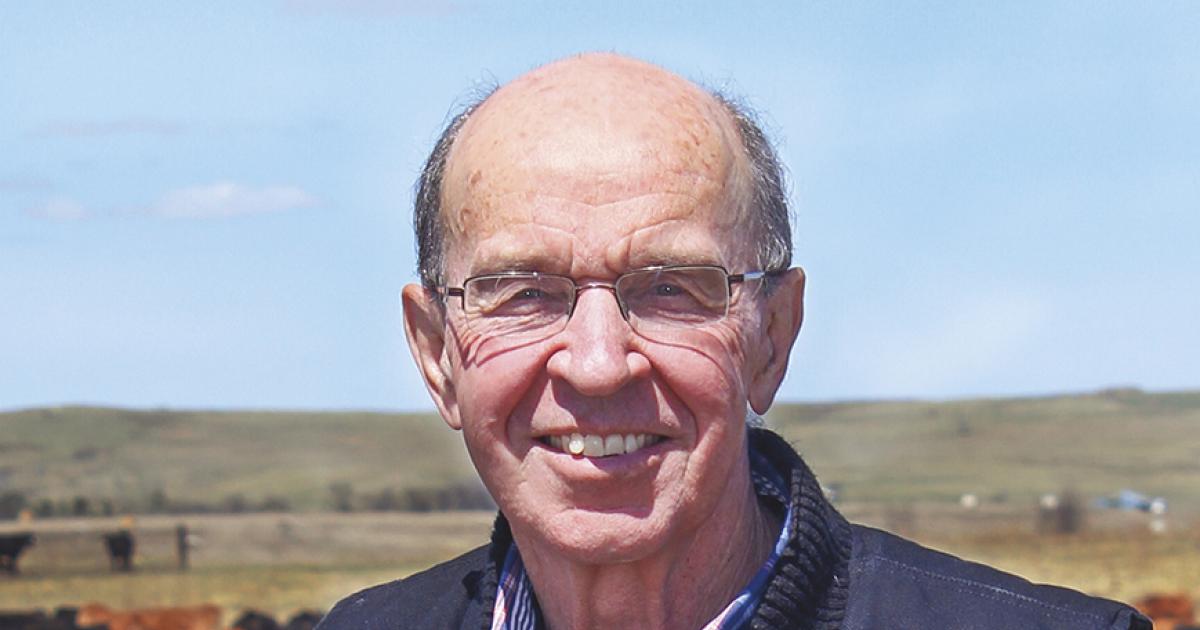Britney Geving and Derek Lyson know firsthand the devastating effects of sepsis, which is a life-threatening complication of an infection. They nearly lost their daughter, Kennedy, to sepsis in 2017 following a horse riding accident which led to multiple surgeries and hospital stays.
Kennedy Lyson shares her time with her dad, Derek, a member of Slope Electric Cooperative, in Marmarth, and her mom, Britney, in Baker, Mont.
Kenney Lyson guides her horse, Gracie, through the family barn in Baker, Mont. (PHOTO BY JOHN KARY/NDAREC
On a typical summer day in June 2017, 10-year-old Kennedy was riding her new horse around the yard in Baker. For an unknown reason, the horse reared, then fell over backwards onto Kennedy with such force that the stitching from the saddle horn was imprinted into the tissue of Kennedy’s stomach.
While Kennedy did not show signs of a head injury or broken bones, she was taken by ground ambulance to a Baker, Mont., hospital, where a CT scan showed she suffered abdominal injuries.
During a complicated recovery at multiple hospitals, Kennedy developed sepsis.
Kennedy had even been discharged, when her condition began failing. With concerns she was developing sepsis, Kennedy was transferred to the Primary Children’s Hospital in Salt Lake City, Utah. By July 3, her family was told Kennedy may not have lived much longer without intervention for sepsis.
TAKING ACTION
Kennedy’s story about developing sepsis is shared by the Minot-based Quality Health Associates of North Dakota, the state’s Medicare-designated health care quality improvement organization. It serves as the North Dakota subcontractor to the Great Plains Quality Innovation Network, a region encompassing North Dakota, South Dakota, Nebraska and Kansas.
Among its focus for improving health care is education and awareness about sepsis.
“Every other year, we have the opportunity to apply for funding to do projects that are very specific to our region,” explained Nikki Medalen, RN, a quality improvement specialist with the Great Plains Quality Innovation Network and a member of Verendrye Electric Cooperative.
“We wanted to do a project that would be impactful on admissions and readmissions in North Dakota and recognize that sepsis is the second leading cause of hospitalization,” she said.
“Sepsis is your body’s toxic inflammatory response to an infection. It’s not the infection itself,” she explained. In essence, instead of fighting the infection, the body turns on itself. Sepsis occurs when chemicals released into the bloodstream to fight the infection trigger inflammatory responses throughout the body. This inflammation can trigger a cascade of changes that can damage multiple organ systems, causing them to fail. The progression of illness from the first signs to organ failure and tissue death is a matter of hours. It can progress quickly with long-lasting effects, even death. Nationally, more than 270,000 people die of sepsis each year, and it is the third leading cause of death in the United States.
“For every hour that sepsis goes untreated, the mortality rate increases by 8 percent,” shared Lisa Thorp, RN, a quality improvement specialist with the Great Plains Quality Innovation Network and a member of North Central Electric Cooperative. “In the early stages of sepsis, it’s hard to recognize, but easy to treat. As they get sicker, it’s easier to recognize sepsis, but harder to treat.”
So, the Great Plains Quality Innovation Network hopes to turn those statistics around.
In a two-tiered approach, the organization developed a project to work with seven rural ambulance squads surrounding the Minot area that mainly transport patients to Trinity Health. These squads include Stanley, Mohall, Bottineau, Rugby, Towner, Velva and Minot Community Ambulance Services.
Emergency medical technicians (EMTs) with those squads are receiving training to recognize sepsis symptoms and alert the hospital of incoming at-risk patients so treatment can be arranged quickly. Sepsis is treated with oxygen, IV fluids and antibiotics to stop the progression of the infection, and slow the body’s inflammatory response.
“North Dakota seems to be ahead of the game, in that they’re very aware of it, but they’re also very receptive to more education, so we’ve had great participation from those ambulance services,” Medalen said.
Four online modules about sepsis have been developed that other ambulance services can access for continuing education units.
“The second portion of our proposal was that we would help educate consumers about the signs and symptoms of sepsis, so they would be able to recognize potential sepsis, just like you recognize signs of a heart attack or stroke,” Medalen said.
“Because sepsis can move quite rapidly, we want to emphasize that the whole gist of this project is to have early recognition,” Thorp said.
Eighty percent of sepsis cases develop in the home, she said.
“About 50 percent of them start with pneumonia, but absolutely any infection can develop into sepsis. It doesn’t matter if it’s bacterial, viral or fungal. It can be anything from a urinary tract infection to a cut on your finger,” Medalen said. The very young, elderly and those with compromised immune systems are more susceptible to sepsis.
Kennedy was hospitalized in Salt Lake City for 26 days, and her parents were strong advocates for her care.
“Her parents so strongly advocated for her. Sepsis truly can be hard to identify in the early stages, and if someone speaks up and says, ‘I am concerned about sepsis,’ most health care providers will act on that. Kennedy was fortunate to be young, strong and healthy, which worked in her favor and helped her fight it for a long time. Others are not so lucky,” Thorp said.
TIME TO RECOGNIZE SIGNS OF SEPSIS
The Sepsis Alliance has developed the “It’s About TIME” campaign,
an acronym to help aid in the recognition of sepsis signs.
TEMPERATURE
Higher or lower than normal; shivering or fever
INFECTION
May have signs or symptoms of an infection
MENTAL DECLINE
Confused, sleepy, difficult to rouse
EXTREMELY ILL
Severe pain or general discomfort described as “worst ever”
If you suspect sepsis, call 911 or go to a hospital immediately and say, “I am concerned about sepsis.”
SEPSIS STATS
• Sepsis is the third leading cause of death in the United States. One person dies every two minutes from sepsis in the United States.
• Risk of death increases nearly 8 percent for every hour that sepsis goes untreated.
• Eighty percent of patients had symptoms of sepsis prior to hospitalization.
• Sepsis is the second leading cause of admission in tertiary hospitals in North Dakota.
• In the early stages, sepsis is difficult to diagnose, but easy to treat. As it progresses, it becomes easy to diagnose, but difficult to treat.
• Early recognition and treatment of sepsis saves lives!
SERVICES AVAILABLE
Nikki Medalen and Lisa Thorp, both quality improvement specialists with the Great Plains Quality Innovation Network, are willing to share a presentation on sepsis with interested groups or host an information booth at events in the target area.
To connect or for more information on sepsis and training modules for ambulance squads: 701-989-6220 or www.greatpl
Luann Dart is a freelance writer and editor who lives in the Elgin area.




